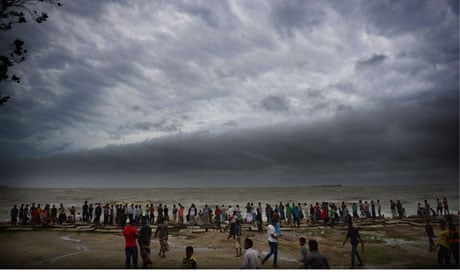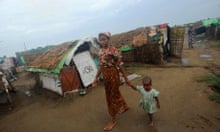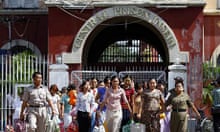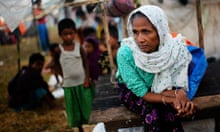Cyclone Mahasen struck the southern coast of Bangladesh on Thursday, lashing remote fishing villages with heavy rain and fierce winds that flattened mud and straw huts.
More than a million people had been evacuated as the cyclone approached but fears of massive devastation proved unfounded.
The UN's Office for the Co-ordination of Humanitarian Affairs had earlier said that more than eight million people in Bangladesh, Burma and north-east India, were at risk from the storm.
However, the main section of the storm had immediately begun weakening as it reached land, said Mohammad Shah Alam, director of the Bangladesh meteorological department.
Among the most vulnerable were tens of thousands of displaced Rohingya people living in plastic-roofed tents and huts made of reeds in dozens of refugee camps along Burma's west coast.
Driven from their homes by violence, many members of the Muslim minority group refused to follow evacuation orders, saying they distrusted officials in the majority-Buddhist country, where Rohingya have faced decades of discrimination.
Even before the storm hit at least 18 deaths relating to Mahasen had been reported in Bangladesh, Burma and Sri Lanka.
Officials put the death toll on Thursday at 10. Though the number seemed relatively low, there was widespread disruption.
In Bangladesh, tens of thousands of people fled their shanty homes along the coast and packed into specially constructed cyclone shelters, schools, government office buildings and some of the 300 hotels in the port city of Cox's Bazar, to wait out the storm.
"We have seen such a disaster before," said Mohammad Abu Taleb, who shut down his convenience shop in Cox's Bazaar "It's better to stay home. I'm not taking any chance."
A 1991 cyclone that hit the country killed an estimated 139,000 people and left millions homeless. In 2008, Burma's southern delta was devastated by cyclone Nargis, which swept away entire farming villages and killed more than 130,000 people.
Both those cyclones were much more powerful than cyclone Mahasen, which is rated category 1, the weakest level.
The district of Barguna in the south-west Bangladesh was the hardest hit, reporting seven dead and a massive power failure.
"There is no electricity. The mobile networks have been damaged," said Abdul Wahhab Bhuiyan, deputy commissioner of Barguna. "The total damage is difficult to ascertain at this time."
Two people died in the southern Patuakhali district.
"Last night we moved about 110,000 people exposed to the cyclone at the district's 360 cyclone shelters," said Amitavh Sarker, deputy commissioner of Patuakhali.
Although assessments were continuing Sarker said that besides crops about 7,500 houses were damaged in the cyclone.
India's meteorological department forecast some damage to the north-eastern states of Assam, Mizoram, Manipur, Tripura and Nagaland, and advised fishermen off the west coast of the country to be cautious for the next 36 hours.
However at least scores of people could have died off the Burmese coast when overcrowded boats carrying more than 100 Rohingya capsized as villagers fled the cyclone on Monday night. Only 43 people had been rescued by Thursday, and more than 50 were still missing.
Much attention was focused on western Burma because of the crowded, low-lying camps where many Rohingya remain.
In Rakhine state, about 140,000 people, mostly Rohingya, have been living in the camps since last year, when two outbreaks of sectarian violence between the Muslim minority and ethnic Rakhine Buddhists forced many from their homes.
Nearly half the displaced live in coastal areas considered highly vulnerable to storm surges and flooding.
The danger from cyclone Mahasen, however, appeared to have eased on Thursday.
Tun Lwin, the retired director general of Myanmar's meteorology department told the Associated Press: "We are out of danger and the impact of the cyclone is almost over. There can be heavy rains in some areas because of the cyclone, but the danger is over."
Ruhul Amin, a local government administrator in Cox's Bazaar, said: "Thank god we have been spared this time."






